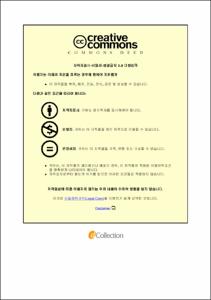C형 용가재를 사용한 TIG용접에서 입열량비에 따른 용접현상에 관한 연구
- Alternative Title
- A Study on the Welding Phenomena according to Heat Input Ratio in TIG Welding using C-type Filler
- Abstract
- Global welding market is changing as eco-friendly, robotized, automated welding. The TIG welding process is an indispensable welding process in industries that require high-quality welds because of the availability of high-quality welds due to the absence of spatter and fumes and the low cost of equipment. TIG (Tungsten Inert Gas) welding is used industry-wide as it is able to secure outstanding welding quality on almost all materials. Additionally, the welding method helps maintain clean work environment without spatter, fume, and slag. Furthermore it shows excellent qualities in terms of health, safety, and environment or HSE compared with other welding processes. However, TIG welding has a problem of low welding productivity and has many limitations in application. In addition, TIG welding is a non-consumable electrode welding method, and the feed rate of the filler acts as an independent variable for the current. However, in the case of GMAW and FCAW, consumable electrode type welding methods, the filler metal feed rate acts as a dependent variable for the current. Therefore, TIG welding can freely adjust the filler metal feed rate and current. In order to improve the productivity in TIG welding, it is necessary to increase the supply amount of the filler and increase the welding current for melting the same. However, when a large current is used, a strong indentation due to the arc pressure generated by the plasma jet causes a severe indentation on the surface of the melting paper, which may cause welding defects. In order to overcome the limitation of this fundamental TIG welding, it is necessary to approach new parameters that can closely observe and identify the welding phenomena between the welding current of TIG welding and the fluxing speed of the consumable.
Therefore, in order to solve the problems in TIG welding for high productivity, it is necessary to verify the parameters of the shear drag ratio, which is a relation parameter between the welding current of the TIG welding and the feed rate of the consumable material.
- Issued Date
- 2019
- Awarded Date
- 2019. 8
- Type
- Dissertation
- Publisher
- 부경대학교
- Affiliation
- 부경대학교 대학원
- Department
- 대학원 신소재시스템공학과
- Advisor
- 조상명
- Table Of Contents
- 1. 서론 1
1.1 연구 배경 1
1.2 연구 동향 3
1.3 연구의 필요성 5
1.4 연구의 목적 6
1.5 연구 개요 7
1.6 요약 9
2. 이론적 배경 11
2.1 TIG 용접 프로세스 11
2.1.1 TIG 용접의 원리 12
2.1.2 용접의 아크 특성 13
2.1.3 TIG 용접에서 용융지에 작용하는 힘 17
2.1.4 TIG 용접에서의 일반적인 제어 인자 21
2.2 입열량비의 필요성 25
2.2.1 TIG용접에서 입열량의 특성 26
2.2.2 TIG용접에서 Power ratio의 특성 28
2.2.3 TIG용접에서 입열량비의 특성 30
2.3 TIG 용접의 아크압력에 관한 연구 32
2.3.1 아크압력이 용융지에 미치는 영향 32
2.3.2 실드가스가 아크압력에 미치는 영향 36
2.4 TIG 용접 생산성 향상에 관한 연구 동향 42
2.4.1 Hot wire TIG용접 43
2.4.2 Twin wire TIG 용접 47
2.4.3 Twin electrode TIG용접 48
2.4.4 Bypass Current Double Sided Arc 용접 51
2.5 C형 용가재를 사용한 TIG용접(Super-TIG Welding) 54
2.5.1 플라즈마 스트림 이론의 개념 54
2.5.2 플라즈마 스트림 이론의 관점에서 본 Super-TIG용접 56
3. TIG용접에서 입열량비에 따른 용융풀 응고속도에 관한 연구 61
3.1 서언 61
3.2 TIG용접에서 입열량비에 따른 용융풀 응고속도 측정 실험 62
3.2.1 실험 재료 및 조건 62
3.2.2 측정 방법 67
3.2.3 Non-OS test의 실험결과 69
3.2.4 Non-OS test의 실험 고찰 76
3.2.5 OS test의 실험결과 79
3.2.6 OS test의 실험 고찰 85
3.3 고찰 88
3.4 결언 90
4. TIG 오버레이용접에서 입열량 비에 따른 변형에 관한 연구 91
4.1 서언 91
4.2 오버레이용접에서 용가재 형상에 따른 변형량 측정 실험 92
4.2.1 실험 재료 92
4.2.2 실험 방법 93
4.2.3 일반 TIG (직선비드)의 실험결과 및 고찰 96
4.2.4 Super-TIG(직선비드)의 실험결과 및 고찰 98
4.2.5 Super-TIG(오실레이션비드)의 실험결과 및 고찰 100
4.3 변형실험의 고찰 102
4.4 변형저감을 위한 Super-TIG 실험 106
4.4.1 변형저감을 위한 Super-TIG 실험 방법 107
4.4.2 변형저감을 위한 Super-TIG 실험 결과 및 고찰 108
4.5 고찰 111
4.6 결언 115
5. TIG 맞대기 용접에서 입열량비에 따른 용입현상에 관한 연구 116
5.1 서언 116
5.2 입열량 비에 따른 용입 현상 실험 117
5.2.1 실험 재료 및 실험조건 117
5.2.2 측정 방법 123
5.2.3 BOP 실험결과 124
5.2.4 Alloy 718 맞대기 용접실험 결과 135
6. 9% 니켈강 TIG맞대기 용접적용에 관한 연구 143
6.1 서언 143
6.2 9% 니켈강 TIG맞대기 용접 실험 144
6.2.1 실험 재료 및 실험조건 144
6.2.2 9% 니켈강 TIG맞대기 용접 실험 결과 148
6.2.3 9% 니켈강 TIG맞대기 용접 기계적 실험 결과 140
6.2.4 9% 니켈강 용접에서 기계적 성질 비교 155
6.3 9% 니켈강 용접의 입열량비에 따른 고찰 162
6.4 결언 171
7. 결론 172
- Degree
- Doctor
- Files in This Item:
-
-
Download
 C형 용가재를 사용한 TIG용접에서 입열량비에 따른 용접현상에 관한 연구.pdf
기타 데이터 / 9.68 MB / Adobe PDF
C형 용가재를 사용한 TIG용접에서 입열량비에 따른 용접현상에 관한 연구.pdf
기타 데이터 / 9.68 MB / Adobe PDF
-
Items in Repository are protected by copyright, with all rights reserved, unless otherwise indicated.